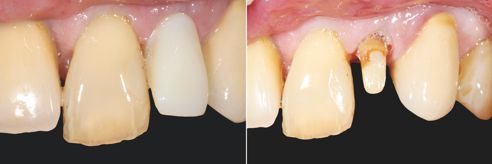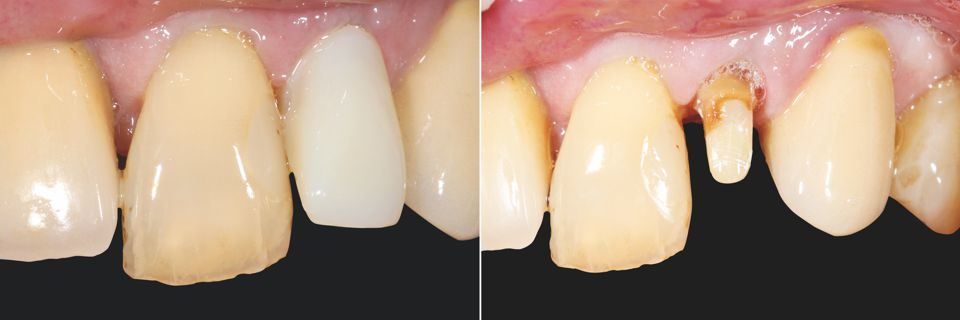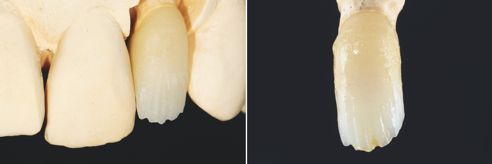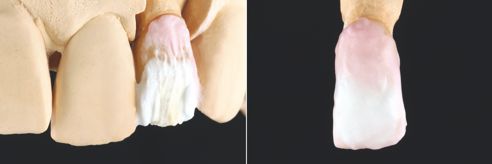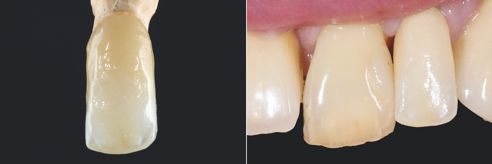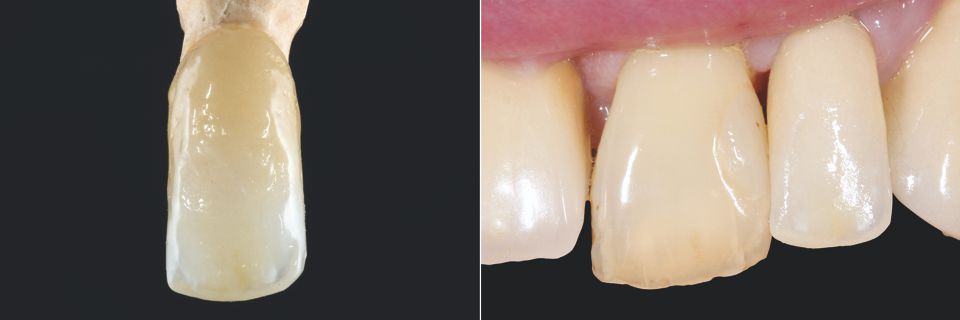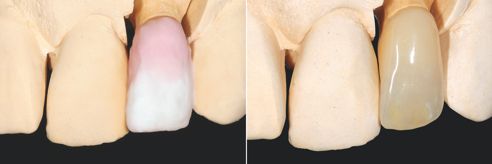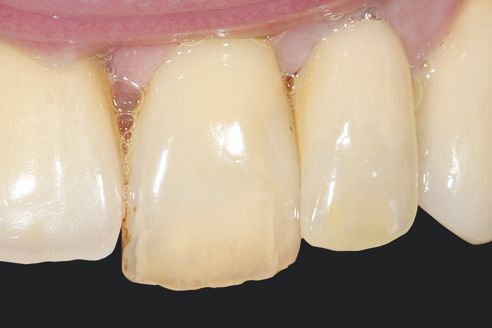Excellent depth effect with ceramic restorations
The reproduction of individual characteristics – such as mamelon structures, anomalies and calcifications – is a special challenge if these lie within the depths of the inner tooth structure. In this case, the VITA INTERNO stains (VITA Zahnfabrik, Bad Säckingen, Germany) for the internal characterization of restorations offer a multitude of possibilities. The stains, for example, can be mixed in with veneering materials and provide for more luminance from the depths. In the following case study, CDT Renato Carretti (Zurich, Switzerland) reports on the effective use of these stains.
1. Initial situation
In the present case, a male patient (55 years old) was to have a full ceramic crown made for region 22. The challenge was to bridge the shade differences between the neighboring teeth and to pick up the individual
characteristics of tooth 12. The base shade 3M2 was determined for the restoration. The patient rejected a new restoration for tooth 11.
2. Manufacturing steps
"My first choice for the restoration of anterior teeth are crowns made of VITABLOCS RealLife (VITA Zahnfabrik). The blanks have an integrated 3-D shade gradient and offer a very natural-looking translucence," says CDT Renato Caretti. The crowns were slightly reduced in the first step and rebuilt with VITA VM 9. For color effects from the depths, the VITA INTERNO stains were used. Finally, restorations can still be characterized with VITA AKZENT Plus stains and glazed.
3. Information and tips
When using VITA INTERNO stains, special care must be taken to overlay them with ceramic. As the name suggests, these are stains for internal application. Normally I do not fire them - instead I just do a fixation firing so that they remain in place," reports CDT Renato Caretti. Because of the intensive color effect, the stains should be used very sparingly.
4. Result and conclusion
The case documentation shows that what may appear on the model as over-accentuated color play is often just right in the patient's mouth since much of the intraoral effect diminished. The naturally matte luster was achieved by polishing once again manually with pumice after the glaze firing. In the view of the dental technician, the overall result in this case may be assessed as the best possible compromise, and one that meets the patient's wishes.
Report 03/16



